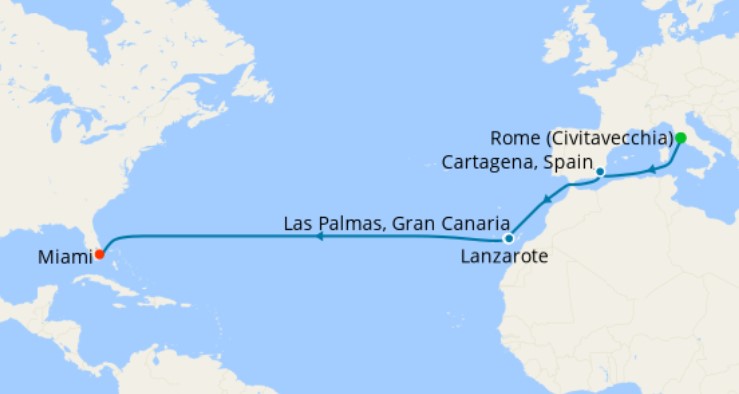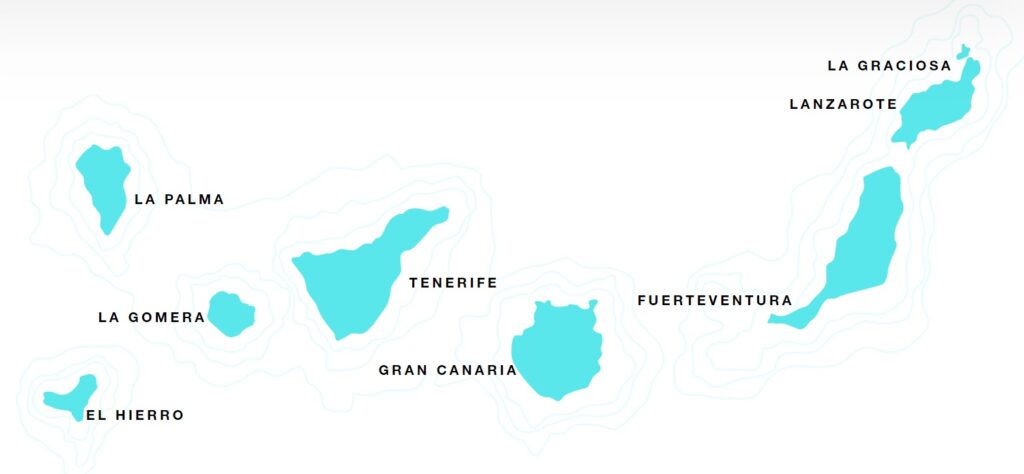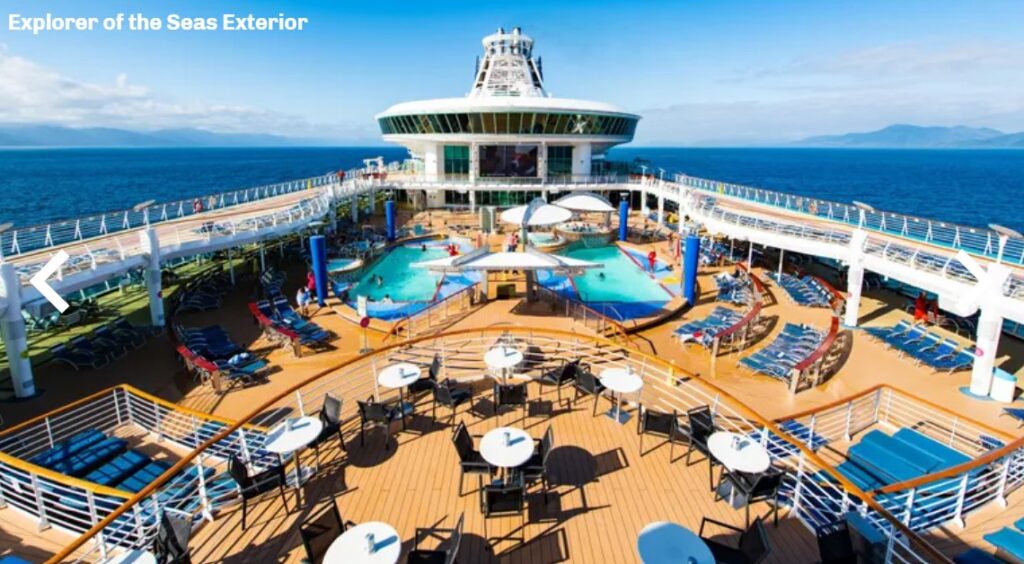
Colombia has been on my bucket list for a very long time now.
The country is more than double the size of France with almost 50 million people living here.
And the government has gone a long way to throw off the mantle of its narco-terrorism roots.
The nation has about 1,600 km of coastline to the north onto the Caribbean Sea, and a further 1,300 km of coast to the west onto the Pacific Ocean. The northern border is Panama, which divides the two bodies of water using the infamous Panama Canal. Venezuela and Brazil sit to the east and Peru and Ecuador to the south.
Cartagena
Our entry was a couple of days into the port city of Cartagena, on the Caribbean coast. Oh my god I love this place.
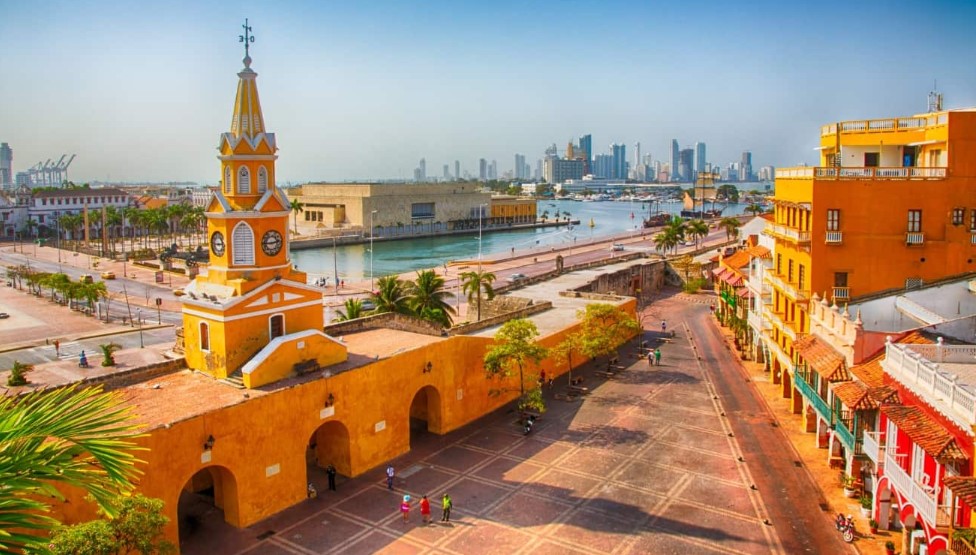
Before I even get into the rant about how great this place is, let’s take a moment to explain the introduction that you get to the town when you get off a cruise ship. As you walk through the port the first thing that you are met with is a FREE aviary and tourist park. This is just there. There are trinket shops, cafes and restaurants right here at the entry point. Within this, the first thing that you see is a grassed area with about 20-50 flamingos in it. Around them are about 10 parrots, some macaws, various waterfowl and the odd tree rat.






Quite literally, if you went no further than this then you would have had a great day out in Cartagena. But there is more. Keep walking around the corner and you come across the ubiquitous “I Love” sign coupled with about another 50 macaws of varying colours. A bit further I got to see my first ever live toucan. From here there were some tortoises and I even ran across a giant anteater.









And all of this for free before you even leave the port, how good is this?
Getting out of the port, we were told it would cost us $20 each in a cab to get to the tourist area. As we walked out we found a dude with a minibus who offered us a 4 hour tour of the sights (including return) for the same price as a one way cab. So off we went.
Cartagena is a major city of about a million people, with a fantastic mix of modern city and down by the ocean is the historic walled Old Town.
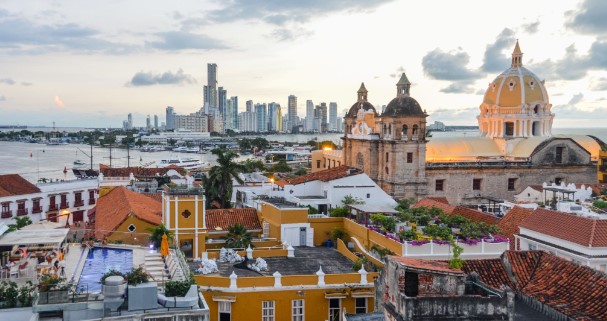
The first stop was the seaside suburb of Manga. This is a leafy residential neighbourhood with a park, seafront promenade and nice views of the new city skyline across the bay.



The next stop was the old city walls and some of the fortifications of Old Town.





This olden section of town was founded in the 16th century and now has the historic squares, cobblestoned streets, colourful colonial buildings, and of course all of the tourist hustle and bustle that you would expect. Fair warning…the touts here can be pretty full on so be prepared for a total assault on the senses.
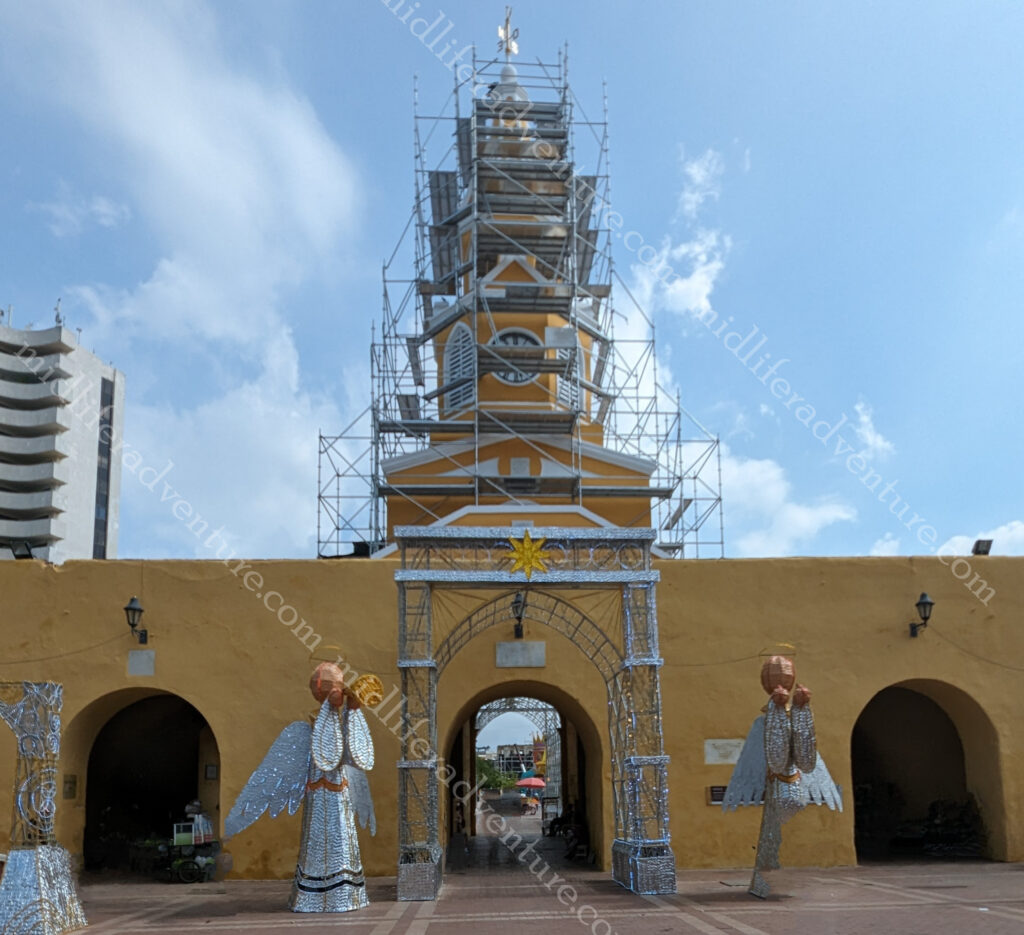
The main entrance to the old town is through the Puerta del Reloj. This is the original and historic main gate to the centre of the fortified city, Cartagena de Indias.
As usual for us, it was covered in scaffolding.
OK…before I step you through the gates into old town, lets talk about the coolest thing in this entire city. Right in the heart of Cartagena city is a small unassuming park surrounded by yellow walls. It is officially called Parque del Centenario and on first glimpses you would probably just walk straight past. But you would have seriously missed out as within the park there were 7 sloths (as of November 2023) living in the trees in and around the park.



In addition to the Sloths, there are also tamarin monkeys, red squirrels and several iguanas in the park. The monkeys are tree rats that annoy you and carry diseases (but the tourists still try and hand feed them) while the Iguanas are usually found lounging on the grass soaking up the sunlight.




The park is located between the squares Plaza de Independencia and Plaza de los Coches. Both of these were in full Christmas decoration phase when we were there. The place just feels right, from happy vendors, beautiful streets great little restaurants the place is welcoming. Admittedly the touts can get a bit much after a while but for the most part they are friendly and just trying to earn a living.



Once you step through the gates you are in full tourist mode (in case you had not already noticed by all of the touts etc).












The Cathedral of Cartagena de Indias was built in the late 16th and early 17th centuries. It is in the heart of Old Town and is dedicated to Saint Catherine of Alexandria. The original structure of the cathedral has been preserved today almost unchanged.







Cartagena is just a lovely city. The care and pride shown in the homes, the parks and the neighbourhoods give the place a really great feel. As our ship stayed here overnight we learned a trick that we should have done. Some people got off the boat and paid for a night’s accommodation (under $100) in the heart of the action. This will be us for sure, next time we come.








Within the walls of the old city is the suburb or area of Getsemani this is the bohemian-style neighbourhood where everyone is welcome. Poor or wealthy, tourist or local? Back in the day, it was the neighbourhood for prostitution, drug, and violence. But today it is the home to awesome street art, food, bars and music.








The street art in this part of town is truly something to behold. What was once probably a pretty sketchy to walk through is now an absolute delight. At no point did we feel nervous or concerned for our safety, even amid the mad tourist throngs.









As part of our tour on day one we hit the usual haunts but also had a couple of entries into some museums around town. The first was an art gallery that focussed on the faces of the pandemic and the losses that were felt in Colombia. The next was the local cultural museum.



The last was the Emerald Museum. Colombia is one of the world’s largest producers of emeralds (supplying about 90% of the world’s supply), and as such they are on sale everywhere. And we went through the museum (and shop) that told us all about this.




We were paired at dinner with a Swedish couple (Patrick and Anna) who were fantastic. So on our second day in Cartagena, we decided to head out together to explore the various areas. They took us to the flash cocktail bars and we took them to the dodgy neighbourhoods. They were such good company that we also spent the next day in Aruba with them kicking back by the beaches.





Castillo de San Felipe de Barajas is the castle/fortress that was built on the Hill of San Lázaro in 1536. It was placed in a strategic location where it could dominate approaches by both land and sea. It was built by the Spanish using African slave labour and was involved in several battles between the late 17th to early 19th centuries between the European powers.



We did not get there this time around but we are due to return to Cartagena in about 6 weeks time for a second stint. We will update these photos and give a much better viewing soon.
Once you get a bit further afield there are other little gems that look they should also be added to the things to see list. Some of these include the islands.
Isla de Barú, with white-sand beaches and palm trees.
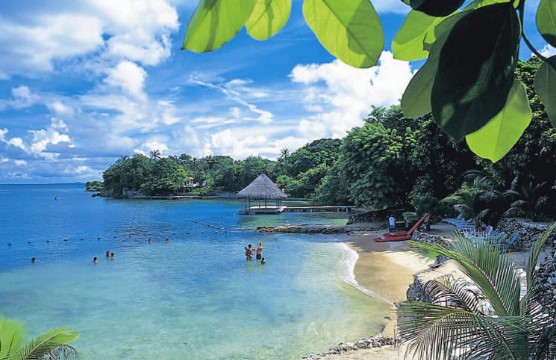

Isla del Rosario, known for their coral reefs.
Tayrona National Park has long stretches of beaches lined with coconut palms and a dense rainforest with lots of day hikes.
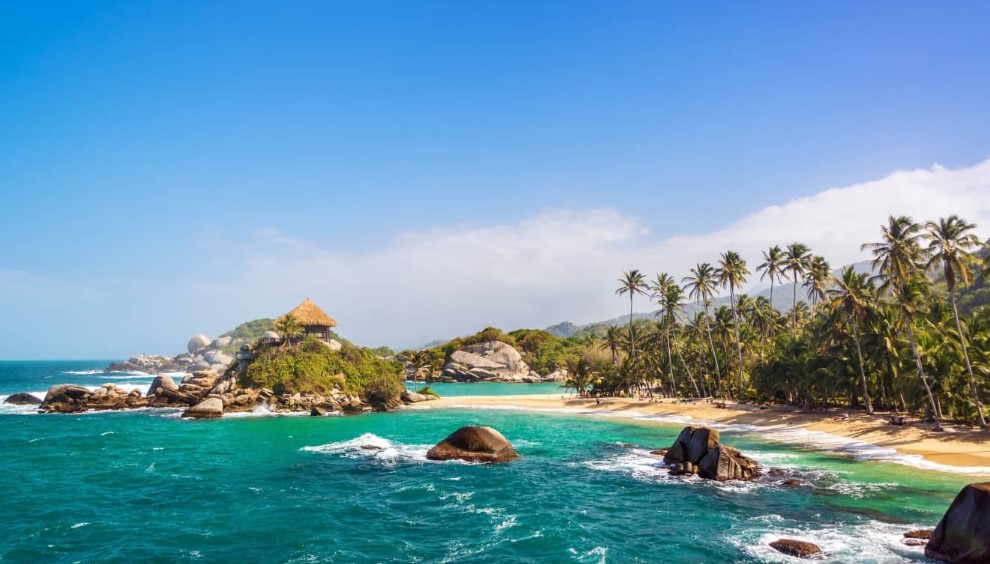
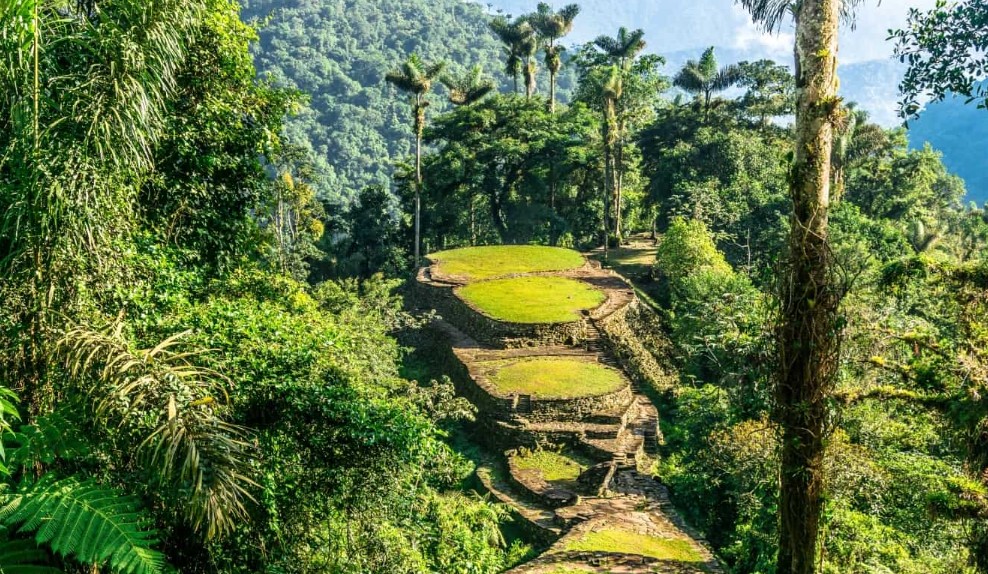
The Lost City (La Ciudad Perdida) was built around 800 CE and contains 169 terraces carved into the mountains, as well as a network of tiled roads and small plazas. The site is older than Machu Picchu!
The last thing that I have to mention about Cartagena is the absolute idiocy of the American tourists. They (almost without exception) all hated it. Clearly Colombia’s troubled past (cartels, paramilitaries, poverty, and petty crime) has cast a long shadow that for many will not go away and danger lurks around every corner.
They felt unsafe and one comment was that they were walking around in groups of 10 or more so that they didn’t get kidnapped. For us, this was truly one of the safest places we have ever been to. I am not sure exactly what they thought they would be ransomed for (maybe their vintage chewed gum collection from high school).
We loved the place and cannot wait to come back (which thankfully we will be fairly soon).










